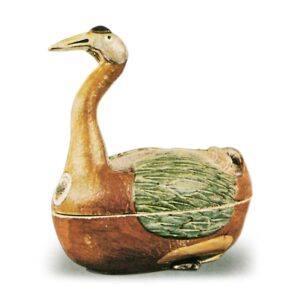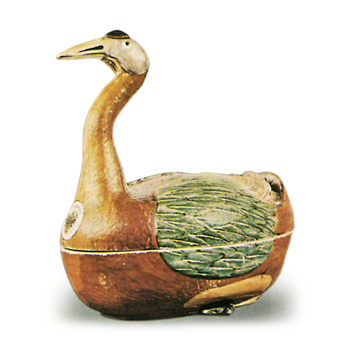
From the end of the 16th century, European countries began to expand into Asia in order to gain profits from trade.
The East India Company was established in each country to trade with Asia, and at that time, Chinese and Japanese ceramics were the most important trade goods. The beauty of Chinese porcelain brought to Europe by the East India Company impressed Europeans so much that it eventually encouraged the production of porcelain in Europe.
In England, founded in 1600, the first import of Chinese porcelain was in 1700, when the ship Macclesfield, which arrived in Canton, bought a tub of Chinese porcelain. Chinese porcelain was then actively imported along with tea and silk, and in 1774 there were fifty-two specialized merchants in London. They sent the necessary designs to China to be produced in Jingdezhen, but the final step, overglaze painting, was done in the suburbs of Guangdong. In France, founded in 1664, the Amphitrite arrived in Canton in October 1698. It is well known that seven Jesuits, including Bouvet, who worked at the court of the Qing Dynasty, were on board. The ship returned to France in August 1700, and among its cargo were 167 boxes of porcelain. The Amphitrite’s second voyage, which lasted from 1701-3, brought in 15 million rubles worth of Chinese porcelain, lacquerware, silk textiles, fans, and other items. In 1723, Japanese goods were also imported. The Dutch established a company in 1602 that took the Portuguese ship San Jago’s cargo in the same year, which included 28 packages of porcelain dishes and 14 packages of small dishes. In 1604, the same Portuguese ship, the Caterina, was captured and sent to Amsterdam, where it contained 100,000 pieces of porcelain weighing approximately 60 tons. It is said that all of the porcelain was underglaze blue porcelain from the Manryaku period (1573-1619). The sale attracted merchants from all over Europe, and was the beginning of the popularity of Chinese porcelain among the nobility. From this point on, the Netherlands was the leader in the Chinese porcelain trade until 1700, when the British moved into the country. Painted wooden vessels were sent to China as samples, and these samples led to the production of large numbers of vessels for export in China. In 1658, 457 pieces of Japanese goods were shipped from Nagasaki to Bengal. By 1682, 190,000 Japanese goods were exported to various parts of Asia, and another 330,000 Japanese goods were exported thereafter. However, most of them were consumed in Asia, and almost exclusively Chinese goods were sent to Europe. In Germany, a trading company was established in 1684 to explore the northern route via Persia and Moscow, but failed, and Frederick the Great also established the Prussian Asiatic Company, but it was unsuccessful. to China and made a hundred percent profit. The Austrian emperor was behind it. However, the company was pressured by the British, French, and Dutch and ceased trade in 1727. In the same year, an Asiatic trading company was established in Sweden with the help of the unemployed, and King Frederick of Sweden supported it and granted it a license for 15 years. The license was renewed and continued until 1813. In the first half of the 18th century, Sweden imported 100,000 pieces of porcelain each year, and in the second half of the century, 10 million pieces were imported. Sweden also sent designs for custom production. In Denmark, the Royal Altona Company was established in 1612, but unsuccessfully, followed by a second company in 1634 and a third in 1728. The first Denmar ship arrived in Canton in 1731. Denmark also sent a wide variety of designs to be made to order.



